United Airlines 2012 Annual Report Download - page 17
Download and view the complete annual report
Please find page 17 of the 2012 United Airlines annual report below. You can navigate through the pages in the report by either clicking on the pages listed below, or by using the keyword search tool below to find specific information within the annual report.-
 1
1 -
 2
2 -
 3
3 -
 4
4 -
 5
5 -
 6
6 -
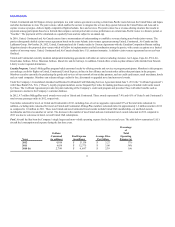 7
7 -
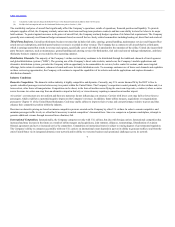 8
8 -
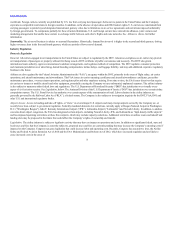 9
9 -
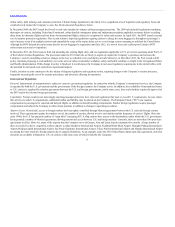 10
10 -
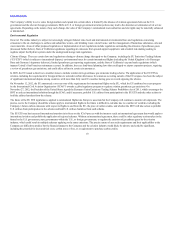 11
11 -
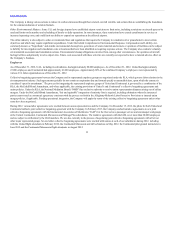 12
12 -
 13
13 -
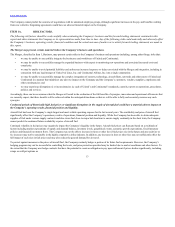 14
14 -
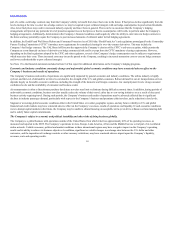 15
15 -
 16
16 -
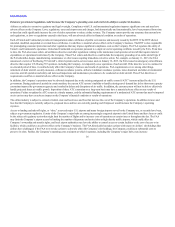 17
17 -
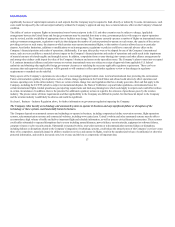 18
18 -
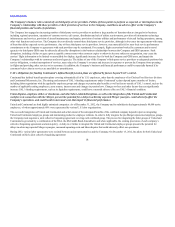 19
19 -
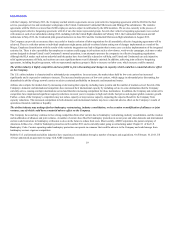 20
20 -
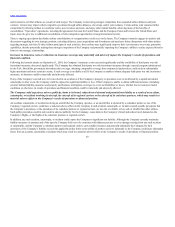 21
21 -
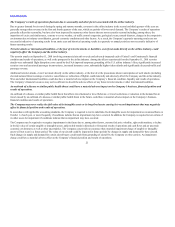 22
22 -
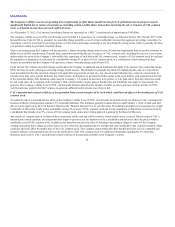 23
23 -
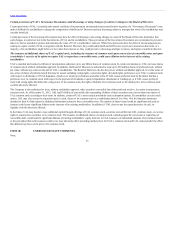 24
24 -
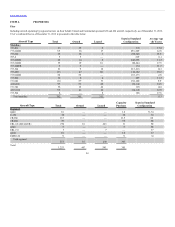 25
25 -
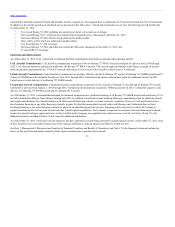 26
26 -
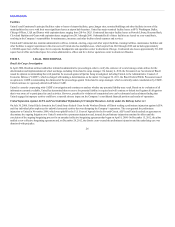 27
27 -
 28
28 -
 29
29 -
 30
30 -
 31
31 -
 32
32 -
 33
33 -
 34
34 -
 35
35 -
 36
36 -
 37
37 -
 38
38 -
 39
39 -
 40
40 -
 41
41 -
 42
42 -
 43
43 -
 44
44 -
 45
45 -
 46
46 -
 47
47 -
 48
48 -
 49
49 -
 50
50 -
 51
51 -
 52
52 -
 53
53 -
 54
54 -
 55
55 -
 56
56 -
 57
57 -
 58
58 -
 59
59 -
 60
60 -
 61
61 -
 62
62 -
 63
63 -
 64
64 -
 65
65 -
 66
66 -
 67
67 -
 68
68 -
 69
69 -
 70
70 -
 71
71 -
 72
72 -
 73
73 -
 74
74 -
 75
75 -
 76
76 -
 77
77 -
 78
78 -
 79
79 -
 80
80 -
 81
81 -
 82
82 -
 83
83 -
 84
84 -
 85
85 -
 86
86 -
 87
87 -
 88
88 -
 89
89 -
 90
90 -
 91
91 -
 92
92 -
 93
93 -
 94
94 -
 95
95 -
 96
96 -
 97
97 -
 98
98 -
 99
99 -
 100
100 -
 101
101 -
 102
102 -
 103
103 -
 104
104 -
 105
105 -
 106
106 -
 107
107 -
 108
108 -
 109
109 -
 110
110 -
 111
111 -
 112
112 -
 113
113 -
 114
114 -
 115
115 -
 116
116 -
 117
117 -
 118
118 -
 119
119 -
 120
120 -
 121
121 -
 122
122 -
 123
123 -
 124
124 -
 125
125 -
 126
126 -
 127
127 -
 128
128 -
 129
129 -
 130
130 -
 131
131 -
 132
132 -
 133
133 -
 134
134 -
 135
135 -
 136
136 -
 137
137 -
 138
138 -
 139
139 -
 140
140 -
 141
141 -
 142
142 -
 143
143 -
 144
144 -
 145
145 -
 146
146 -
 147
147 -
 148
148 -
 149
149 -
 150
150 -
 151
151 -
 152
152 -
 153
153 -
 154
154 -
 155
155 -
 156
156 -
 157
157 -
 158
158 -
 159
159 -
 160
160 -
 161
161 -
 162
162 -
 163
163 -
 164
164 -
 165
165 -
 166
166 -
 167
167 -
 168
168 -
 169
169 -
 170
170 -
 171
171 -
 172
172 -
 173
173 -
 174
174 -
 175
175 -
 176
176 -
 177
177 -
 178
178 -
 179
179 -
 180
180 -
 181
181 -
 182
182 -
 183
183 -
 184
184 -
 185
185 -
 186
186 -
 187
187 -
 188
188 -
 189
189 -
 190
190 -
 191
191 -
 192
192 -
 193
193 -
 194
194 -
 195
195 -
 196
196 -
 197
197 -
 198
198 -
 199
199 -
 200
200 -
 201
201 -
 202
202 -
 203
203 -
 204
204 -
 205
205 -
 206
206 -
 207
207 -
 208
208 -
 209
209 -
 210
210 -
 211
211 -
 212
212 -
 213
213 -
 214
214 -
 215
215 -
 216
216 -
 217
217 -
 218
218 -
 219
219 -
 220
220 -
 221
221 -
 222
222 -
 223
223 -
 224
224 -
 225
225 -
 226
226 -
 227
227 -
 228
228 -
 229
229 -
 230
230 -
 231
231 -
 232
232 -
 233
233 -
 234
234 -
 235
235 -
 236
236 -
 237
237 -
 238
238 -
 239
239 -
 240
240 -
 241
241 -
 242
242 -
 243
243 -
 244
244 -
 245
245 -
 246
246 -
 247
247 -
 248
248 -
 249
249 -
 250
250 -
 251
251 -
 252
252 -
 253
253 -
 254
254 -
 255
255 -
 256
256 -
 257
257 -
 258
258 -
 259
259 -
 260
260 -
 261
261 -
 262
262 -
 263
263 -
 264
264 -
 265
265 -
 266
266 -
 267
267 -
 268
268 -
 269
269 -
 270
270 -
 271
271 -
 272
272 -
 273
273 -
 274
274 -
 275
275 -
 276
276 -
 277
277 -
 278
278 -
 279
279 -
 280
280 -
 281
281 -
 282
282 -
 283
283 -
 284
284 -
 285
285 -
 286
286 -
 287
287 -
 288
288 -
 289
289 -
 290
290 -
 291
291 -
 292
292 -
 293
293 -
 294
294 -
 295
295 -
 296
296 -
 297
297 -
 298
298 -
 299
299 -
 300
300 -
 301
301 -
 302
302 -
 303
303 -
 304
304 -
 305
305 -
 306
306 -
 307
307 -
 308
308 -
 309
309 -
 310
310 -
 311
311 -
 312
312 -
 313
313 -
 314
314 -
 315
315 -
 316
316 -
 317
317 -
 318
318 -
 319
319 -
 320
320 -
 321
321 -
 322
322 -
 323
323 -
 324
324 -
 325
325 -
 326
326 -
 327
327 -
 328
328 -
 329
329 -
 330
330 -
 331
331 -
 332
332 -
 333
333 -
 334
334 -
 335
335 -
 336
336 -
 337
337 -
 338
338 -
 339
339 -
 340
340 -
 341
341 -
 342
342 -
 343
343 -
 344
344 -
 345
345 -
 346
346 -
 347
347 -
 348
348 -
 349
349 -
 350
350 -
 351
351 -
 352
352 -
 353
353 -
 354
354 -
 355
355 -
 356
356 -
 357
357 -
 358
358 -
 359
359 -
 360
360 -
 361
361 -
 362
362 -
 363
363 -
 364
364 -
 365
365 -
 366
366 -
 367
367 -
 368
368 -
 369
369 -
 370
370 -
 371
371 -
 372
372 -
 373
373 -
 374
374 -
 375
375 -
 376
376 -
 377
377 -
 378
378 -
 379
379 -
 380
380 -
 381
381 -
 382
382 -
 383
383 -
 384
384 -
 385
385 -
 386
386 -
 387
387 -
 388
388 -
 389
389 -
 390
390 -
 391
391 -
 392
392 -
 393
393 -
 394
394 -
 395
395 -
 396
396 -
 397
397 -
 398
398 -
 399
399 -
 400
400 -
 401
401 -
 402
402 -
 403
403 -
 404
404 -
 405
405 -
 406
406 -
 407
407 -
 408
408 -
 409
409 -
 410
410 -
 411
411 -
 412
412 -
 413
413 -
 414
414 -
 415
415 -
 416
416 -
 417
417 -
 418
418 -
 419
419 -
 420
420 -
 421
421 -
 422
422 -
 423
423 -
 424
424 -
 425
425 -
 426
426 -
 427
427 -
 428
428 -
 429
429 -
 430
430 -
 431
431 -
 432
432 -
 433
433 -
 434
434 -
 435
435 -
 436
436 -
 437
437 -
 438
438 -
 439
439 -
 440
440 -
 441
441 -
 442
442 -
 443
443 -
 444
444 -
 445
445 -
 446
446 -
 447
447 -
 448
448 -
 449
449 -
 450
450 -
 451
451 -
 452
452 -
 453
453 -
 454
454 -
 455
455 -
 456
456 -
 457
457 -
 458
458 -
 459
459 -
 460
460 -
 461
461
 |
 |

Table of Contents
Extensive government regulation could increase the Company’s operating costs and restrict its ability to conduct its business.
Airlines are subject to extensive regulatory and legal oversight. Compliance with U.S. and international regulations imposes significant costs and may have
adverse effects on the Company. Laws, regulations, taxes and airport rates and charges, both domestically and internationally, have been proposed from time
to time that could significantly increase the cost of airline operations or reduce airline revenue. The Company cannot provide any assurance that current laws
and regulations, or laws or regulations enacted in the future, will not adversely affect its financial condition or results of operations.
Each of United and Continental provides air transportation under certificates of public convenience and necessity issued by the DOT. If the DOT altered,
amended, modified, suspended or revoked these certificates, it could have a material adverse effect on the Company’s business. The DOT is also responsible
for promulgating consumer protection and other regulations that may impose significant compliance costs on the Company. The FAA regulates the safety of
United’s and Continental’s operations. United and Continental are operators pursuant to a single air carrier operating certificate issued by the FAA. From time
to time, the FAA also issues orders, airworthiness directives and other regulations relating to the maintenance and operation of aircraft that require material
expenditures or operational restrictions by the Company. These FAA orders and directives could include the temporary grounding of an entire aircraft type if
the FAA identifies design, manufacturing, maintenance or other issues requiring immediate corrective action. For example, on January 11, 2013, the FAA
announced a review of the Boeing 787 aircraft’s critical systems and in-service issues and, on January 16, 2013, the FAA issued an emergency airworthiness
directive that requires U.S. Boeing 787 operators, including the Company, to temporarily cease operations of such aircraft. If the directive were to continue for
an extended period of time, it could adversely affect the Company’s business and results of operations. FAA requirements cover, among other things,
retirement of older aircraft, security measures, collision avoidance systems, airborne windshear avoidance systems, noise abatement and other environmental
concerns, aircraft operation and safety and increased inspections and maintenance procedures to be conducted on older aircraft. These FAA directives or
requirements could have a material adverse effect on the Company.
In addition, the Company’s operations may be adversely impacted due to the existing antiquated air traffic control (“ATC”) system utilized by the U.S.
government. During peak travel periods in certain markets, the current ATC system’s inability to handle existing travel demand has led to short-term capacity
constraints imposed by government agencies and resulted in delays and disruptions of air traffic. In addition, the current system will not be able to effectively
handle projected future air traffic growth. Imposition of these ATC constraints on a long-term basis may have a material adverse effect on our results of
operations. Failure to update the ATC system in a timely manner, and the substantial funding requirements of a modernized ATC system that may be imposed
on air carriers may have an adverse impact on the Company’s financial condition or results of operations.
The airline industry is subject to extensive federal, state and local taxes and fees that increase the cost of the Company’s operations. In addition to taxes and
fees that the Company is currently subject to, proposed taxes and fees are currently pending and if imposed, would increase the Company’s operating
expenses.
Access to landing and take-off rights, or “slots,” at several major U.S. airports and many foreign airports served by the Company are, or recently have been,
subject to government regulation. Certain of the Company’s major hubs are among increasingly congested airports in the United States and have been or could
be the subject of regulatory action that might limit the number of flights and/or increase costs of operations at certain times or throughout the day. The FAA
may limit the Company’s airport access by limiting the number of departure and arrival slots at high density traffic airports, which could affect the
Company’s ownership and transfer rights, and local airport authorities may have the ability to control access to certain facilities or the cost of access to its
facilities, which could have an adverse effect on the Company’s business. The FAA historically has taken actions with respect to airlines’ slot holdings that
airlines have challenged; if the FAA were to take actions to adversely affect the Company’s slot holdings, the Company could incur substantial costs to
preserve its slots. Further, the Company’s operating costs at airports at which it operates, including the Company’s major hubs, may increase
16
